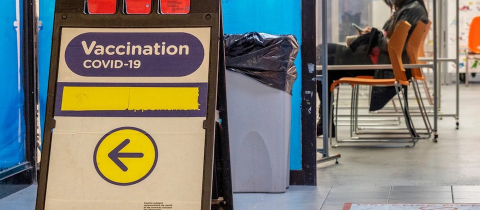This article was originally posted in the Montreal Gazette.
It should be clear by this point that we are in a sixth wave driven by the BA.2 variant. With COVID cases and hospitalizations rising, it still remains somewhat unclear how high they will go and how long it will last. But what is stymying many people this time around and making the whole issue more complicated is the issue of testing.
After the fifth wave, widespread PCR testing stopped because the system simply couldn’t cope. Rapid tests became, out of necessity, the standard testing strategy for the general population. There are obviously several advantages to rapid tests. They are cheaper, more widely available, can be done at home and do not require medical personnel to administer them.
But, there is the issue of test accuracy. False positives with rapid tests are extremely rare, with one research letter in JAMA pegging the false positivity rate at 0.05% and many of these false positives were traced back to a single batch of tests, which suggests it was a specific quality control issue rather than a question of decreased test accuracy.
But while false positives are rare, false negatives are not. It seems, from anecdotal experience, that we are seeing more false negatives during this wave, which has led to speculation that the tests may not perform as well against the Omicron variant and now BA.2. (The new variant has not been around long enough to generate enough data, but the assumption is that it would behave the same way as Omicron, given their similarity.)
There is a theoretical basis for this concern. The Omicron variant in particular had mutations on the S-gene that coded for the spike protein and might not be detected by some laboratory tests. The U.S. Food and Drug Administration keeps an ongoing list of specific test kits that may have issues with new variants, but don’t specifically mention any rapid tests that have issues with the Omicron variant. The FDA does say, “early data suggests that antigen tests do detect the Omicron variant but may have reduced sensitivity,” but does not raise any specific issues or provide any data.
The Ontario Science Table did review the sensitivity of rapid tests against the Delta and Omicron variants and found, in unpublished studies, that the sensitivity against Omicron was clearly lower than it was for Delta. Its analysis suggested that the sensitivity of rapid tests to detect the Omicron variant was 37 percent, compared to 81 percent for Delta. In effect, this means that if 100 people had COVID and were infected with the Omicron variant, only 37 of them would get a positive result and the others would get a falsely negative result.
On the surface, this would seem concerning and would likely explain why many people have reported testing negative at first only to then be diagnosed with COVID-19 a few days later. But, it’s important to point out the test sensitivity does vary between studies and another unpublished study not included in that review found that the sensitivity of the tests with respect to Omicron ranged between 65 and 95 percent in the different patient populations. Also, while test sensitivity was low overall, it was over 80 percent after Day 3 of the infection and improved considerably with repeat testing.
Whether the genetic changes in new variants are having an impact on test accuracy is not entirely clear. Part of the problem is that the predictive value of test changes as disease prevalence changes. As diseases become more common, the relative number of true positives vs. false positives shifts and we get fewer false positives but consequently more false negatives. So as COVID cases surge, we must expect more false negatives, for purely mathematical reasons.
The solution, though, is clear. If you think you have COVID and test negative, you need to test again.







